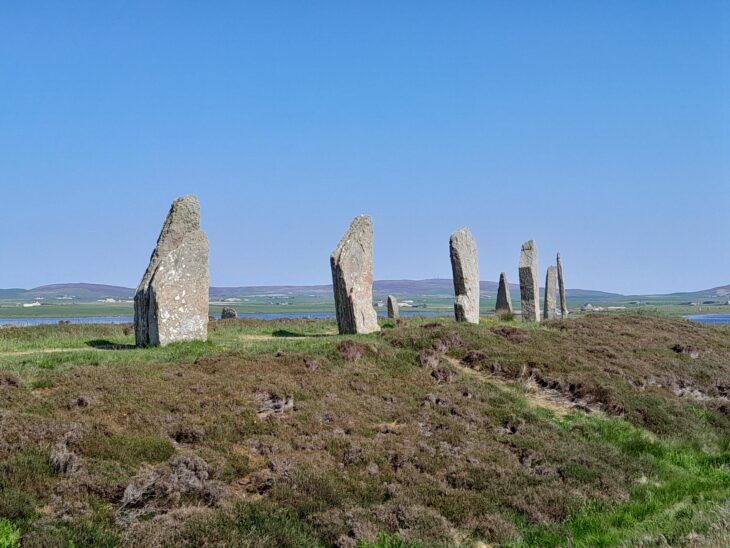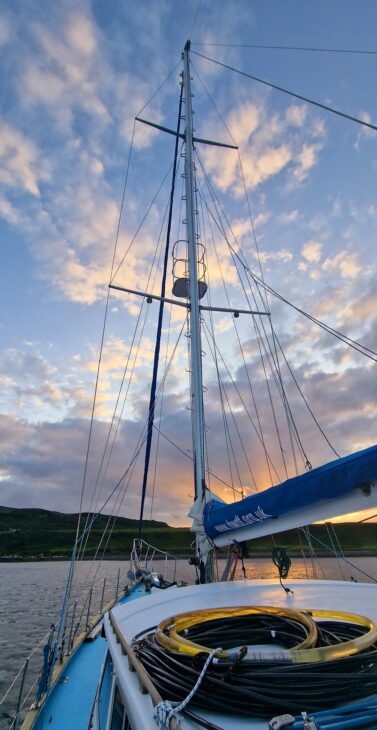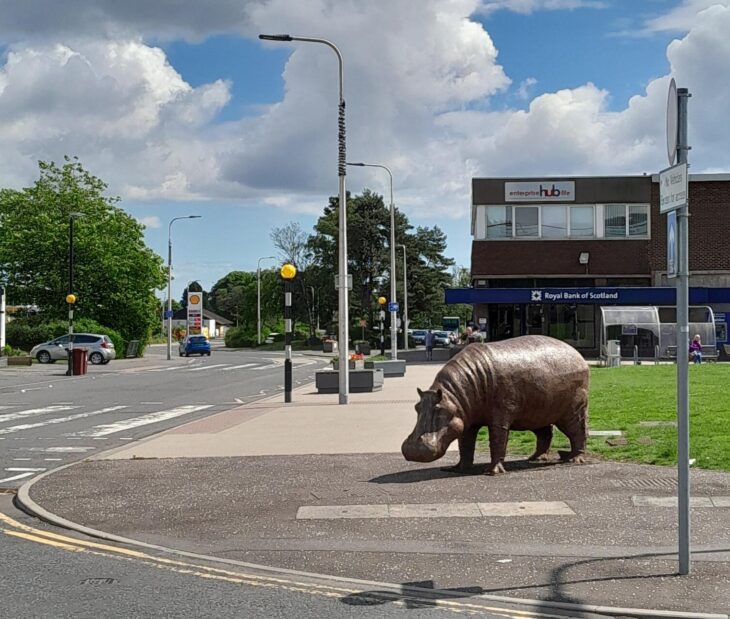Written by Christine Tansey, Better Biodiversity Data project – Partnership Officer
As part of the Better Biodiversity Data (BBD) project’s engagement with the biodiversity data community in Scotland, the BBD project team has been visiting project partners around the country. In this blog Christine Tansey tells us more about what the team has learnt on their travels.
It was early May when the BBD project team started our odyssey around Scotland to gain a greater understanding of the current biological recording infrastructure, and how records are managed and accessed in different places.
We started by travelling to the West, and finding out how the volunteer-led Argyll Biological Records Centre (ABReC) co-ordinates recording trips and collates records. In Glasgow, we saw behind the scenes at the museum, touring the zoological store. We heard about the historical records that can be extracted from museum collections, as well as those managed by the Glasgow Museums Biological Records Centre (GMBRC).
Our next stop took us to the South West Scotland Environmental Information Centre (SWSEIC), who host an annual wildlife recorders gathering and work closely with recording schemes to collate records in the region.
Venturing further afield, we travelled to South Uist to meet Outer Hebrides Biological Recording (OHBR). This small, dedicated group of volunteers produce an in-depth report about the Outer Hebrides each year, where local recording is often added to by visiting natural historians. Our meeting was soundtracked by calling corncrakes, and we managed to squeeze in a walk on West Beach on Berneray, where we saw washed up seagrasses and did a short impromptu beach clean.
Back on the mainland, we spent some time in Edinburgh, talking with the National Museum of Scotland (NMS), the Royal Botanic Gardens Edinburgh (RBGE) and the Scottish Wildlife Trust (SWT) about the wider biological recording community. As custodians of historic biodiversity data in their collections and herbaria, NMS and RBGE are well placed to improve our knowledge of changes in Scottish biodiversity. SWT provided our team with some valuable advice on how to engage with policymakers to ensure biodiversity data management is built into future policy and legislative changes.
Returning to the road, we travelled to Orkney, to share information and discuss the direction the Orkney Wildlife Recording Group (OWRG) is taking to re-establish a local recording structure after the closure of their Records Centre 3 years ago. While there, we were able to chat with local representatives of Seasearch, the Orkney Native Wildlife Project and the Species on the Edge Orkney team among others. We came away with a real sense of the extensive activities of the local recording community, as well as enjoying the Ragged Robin and Yellow Rattle around the Standing Stones of Stenness.

Mike Tetley, the BBD programme manager has a background in marine mammal research and our journeys to the islands afforded the opportunity for a crash course on ferry-based survey. We were able to see Harbour porpoises, common and Risso’s dolphins and Minke whales on several legs of the BBD tour.
Mid-June saw us return to the central belt to visit The Wildlife Information Centre (TWIC), one of Scotland’s most well-established records centres. We gained an insight into the strong relationships TWIC has built with local authorities in their region, as well as the training and events they deliver. Attending TWIC conferences were a highlight during my own time doing PhD research at the University of Edinburgh.
In late June I joined Silurian, the Hebridean Whale and Dolphin Trust’s (HWDT) research vessel for their trip from Ullapool to her home anchorage in Tobermory. As my background means I am more familiar with terrestrial recording, joining Silurian provided an insight into how HWDT collect cetacean sightings and acoustic data. HWDT have trained over 1000 citizen scientists in recording marine mammals over the last 20- years, and these surveys provide invaluable data to both NatureScot and scientific researchers, contributing to our understanding of the status of cetaceans in Scotland’s seas.

July brought with it a visit to the East, where we met with Fife Nature to find out how they work as a records centre sitting within Fife Council. Glenrothes provided one of our more unusual sightings, with a hippopotamus now a permanent resident among its roundabouts!
Travelling onward to Dundee, BBD met with representatives of the Tayside Biodiversity Partnership, three local authorities and Dundee Botanic Garden. As a region without a formal records centre, Tayside has the opportunity to review its local recording infrastructure as we develop national level support through the BBD project.
As August arrived, we reached the North East and travelled to Inverness to meet with Highland Biological Recording Group (HBRG), another volunteer-led group that covers a vast swathe of Scotland’s land area. They produce reports and atlases for different taxa in the region. A short hop to Aberdeenshire enabled us to give a short seminar on the BBD project for the James Hutton Institute and catch up with North East Scotland Biological Records Centre (NESBReC). NESBReC sit within the local authority and have established strong links with other council departments. Later in September, our final major stop on the tour will be to Shetland, to visit Shetland Biological Records Centre (SBRC).
Throughout our time meeting with those managing our biological records in Scotland, it has become increasingly clear how vastly different each region’s infrastructure is. With the BBD project, we hope to ensure a core level of support across all regions, and enable each to continue to develop their own services.

